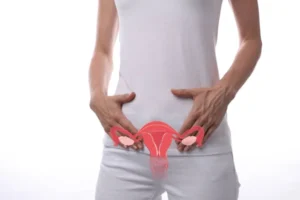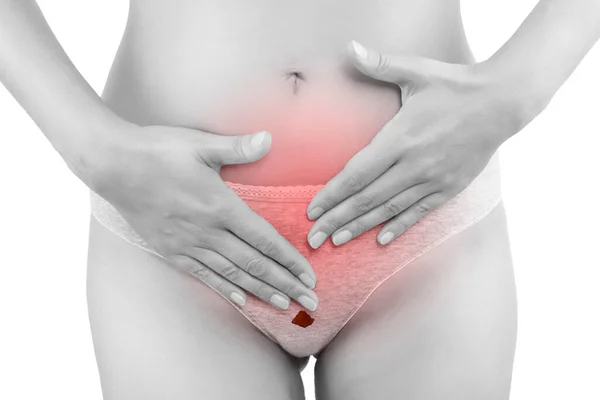Experiencing brown spotting after period can be a perplexing or even alarming symptom for many individuals. This article aims to demystify the causes and implications of brown spotting after period, offering reassurance and guidance. While often considered a normal part of the menstrual cycle, it’s crucial to distinguish when this symptom might signal an underlying health issue. By understanding the nuances of brown spotting after period, individuals can better monitor their health and seek appropriate care when necessary.
What Is Brown Spotting After Period?

Brown spotting after period refers to the light vaginal bleeding that occurs after a menstrual period has ended. Unlike the fresh, red blood typically seen during menstruation, brown spotting is characterized by a darker, brownish discharge. This coloration results from blood that has taken longer to exit the uterus, undergoing oxidation in the process. Understanding this phenomenon is crucial for recognizing when brown spotting after period is a benign symptom and when it might indicate a more serious condition.
Common Reasons for Brown Spotting After Period
Hormonal Fluctuations
- Hormonal changes can significantly impact your menstrual cycle, often leading to brown spotting after period. The body’s natural fluctuations in estrogen and progesterone levels can cause light bleeding or spotting, especially in the days following menstruation.
End of Menstrual Cycle
- End of the cycle spotting is common as the period winds down. The slower exit of blood from the body at this time can lead to oxidation, turning the spotting a brown color. This is often considered a normal part of the menstrual process.
Birth Control Usage
- Hormonal contraceptives, such as the pill, IUDs, or implants, can cause irregular bleeding or brown spotting after period. This spotting may occur as the body adjusts to the contraceptive or as a side effect of the contraceptive method itself.
Uterine Fibroids
- Uterine fibroids are non-cancerous growths in the uterus that can cause a range of symptoms, including brown spotting after period. They may disturb the normal menstrual cycle and lead to spotting between periods.
Perimenopause
- Perimenopause, the transition phase before menopause, can also cause menstrual irregularities, including brown spotting after period. Hormonal fluctuations during this time can lead to changes in bleeding patterns.
Identifying the cause of brown spotting after period is crucial for understanding whether it’s a normal part of your menstrual cycle or a sign of a potential health issue. Monitoring your body and discussing these symptoms with a healthcare provider can help in managing or treating the underlying cause effectively.
When Should You Be Concerned?
Abnormal Bleeding Patterns
Recognizing when brown spotting after period is part of a normal cycle versus when it might be a sign of a more serious condition is crucial. Be alert to changes such as:
- Spotting that occurs frequently outside of your regular menstrual cycle.
- Heavy spotting or bleeding that requires more than a panty liner.
- Spotting accompanied by severe pain, which is not typical for you.
Accompanying Symptoms
Certain symptoms alongside brown spotting after period warrant immediate medical attention, including:
- Severe abdominal pain
- Fever
- Unusual discharge odor, indicating a possible infection
- Prolonged spotting lasting more than a few days after your period should have ended
These signs can indicate underlying health issues such as infections, hormonal imbalances, or other conditions requiring medical evaluation.
Diagnosis and When to See a Doctor
Self-Monitoring Tips
Tracking your menstrual cycle and any occurrences of brown spotting after period can aid in diagnosing potential issues. Consider logging:
- The duration and flow of your regular period
- The frequency and appearance of spotting
- Any supplementary signs and symptoms, including discomfort or pain
Seeking Medical Advice
It’s wise to speak with a medical professional if:
- Brown spotting after period becomes a regular occurrence
- You experience any concerning symptoms mentioned above
- Spotting changes in frequency, duration, or intensity
Diagnostic Tests
Healthcare providers may recommend several tests to determine the cause of brown spotting after period, including:
- Blood tests to check hormone levels
- Ultrasounds to look for abnormalities in the reproductive organs
- Pap smears to screen for cervical changes or infections
Understanding when to seek help and what to expect in terms of diagnosis can empower you to take charge of your reproductive health. Monitoring symptoms and communicating openly with your healthcare provider are key steps in addressing brown spotting after period.
Treatment Options

Addressing brown spotting after period effectively depends on the underlying cause. Treatment options can range from medical interventions to lifestyle adjustments.
Hormonal Treatments
For issues related to hormonal imbalances, treatments might include:
- Hormonal birth control pills to regulate menstrual cycles
- Progesterone therapies to balance hormone levels
- Hormone-releasing IUDs that may reduce spotting over time
Surgical Options
In cases where brown spotting after period is caused by physical abnormalities like fibroids or polyps, surgical options may be considered:
- Hysteroscopy for removing polyps or fibroids
- Endometrial ablation to remove the lining of the uterus, reducing bleeding
- Myomectomy for fibroid excision without uterine excision
Natural and Home Remedies
Some individuals may find relief from brown spotting after period through non-medical means, such as:
- Maintaining a healthy weight, as excess body fat can affect hormone levels
- Stress reduction techniques, since stress can impact menstrual cycles
- Dietary changes, incorporating more iron-rich foods to compensate for blood loss
Preventive Measures and Healthy Practices
Preventing brown spotting after period involves a holistic approach to health, focusing on regular medical care and lifestyle choices.
Regular Gynecological Check-ups
- Examinations conducted annually are essential for identifying possible problems early.
- Discussing menstrual changes with your doctor during visits can help identify problems early.
Healthy Lifestyle Choices
Adopting a healthy lifestyle can positively impact menstrual health:
- Regular exercise improves overall bodily functions, including hormonal balance.
- Reproductive health is supported by a diet rich in vitamins and minerals that is balanced.
- Stress management through meditation, yoga, or other relaxation techniques can mitigate the effects of stress on the menstrual cycle.
Implementing these treatment options and preventive measures can help manage or reduce brown spotting after period, contributing to better reproductive health and wellbeing.
Conclusion
In wrapping up our comprehensive guide on brown spotting after period, it’s clear that while this phenomenon can be a normal part of the menstrual cycle for some, it may also signal underlying health issues for others. Recognizing the nuances between normal and abnormal spotting, understanding potential causes, and knowing when to seek medical advice are crucial steps in managing your reproductive health effectively. Emphasizing the importance of regular gynecological check-ups, a healthy lifestyle, and staying informed about your body’s signals encourages proactive health management. Always remember, paying attention to changes and seeking professional advice when concerned is the best approach to maintaining your health and well-being.
FAQ Section

- Is brown spotting after periods a sign of pregnancy? Brown spotting can sometimes indicate implantation bleeding, which occurs in early pregnancy. However, it’s not a definitive sign of pregnancy and should be evaluated in conjunction with other symptoms.
- Can stress cause brown spotting? Yes, stress can impact hormonal balance and menstrual cycles, potentially leading to brown spotting.
- How does birth control affect spotting and menstrual flow? Birth control can cause irregular spotting, especially during the first few months of use as the body adjusts to the hormones.
- What lifestyle changes can help manage or reduce brown spotting?
- Maintaining a healthy weight
- Regular physical activity
- Stress management
- A balanced diet rich in essential nutrients
- When should I be concerned about brown spotting after my period? If the spotting is frequent, heavy, accompanied by pain, or if you notice other unusual symptoms, it’s important to consult a healthcare provider.
READ ALSO:
